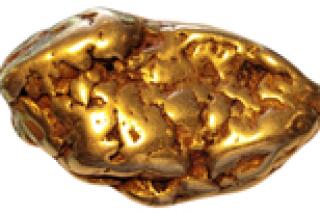Renegade Eagle Has Landed
- Share via
It’s been called the Holy Grail of coin collecting, and behind it lies a tale of a teetering American economy, international relations and a mysterious disappearance.
This 1933 Double Eagle--its worth estimated at up to $6 million, some say more--will soon become the only coin of its kind to be owned legally. The rare $20 gold coin, which never made it into circulation as legal tender, will be on display Thursday through Sunday at the Long Beach Coin & Collectibles Expo. In July, it will be jointly auctioned by Sotheby’s and coin-seller Stack’s in New York.
“It’s a big buzz all over the world,” says Ronald J. Gillio, general chairman of the expo. “Everyone in the coin business is talking about it.”
People outside the business are talking as well. “The thing about this coin,” says David Tripp, Sotheby’s special consultant and author of the auction catalog, “is you don’t have to be a coin collector to be intrigued. It’s almost a one-coin collection.”
Nearly 500,000 Double Eagles, so called because they were double the value of the $10 Eagle coin, were produced in 1933 using a design created by the late American sculptor Augustus Saint-Gaudens. But they were never put into circulation because, in an effort to lift the economy from the Depression, President Franklin D. Roosevelt took the country off the gold standard. So the coins sat in vaults.
In 1934, U.S. Mint cashier George McCann sent two of the coins to the Smithsonian’s numismatic collection. Three years later, all the remaining coins were melted into bullion. Or so it was thought.
In 1941, a Chicago-based company called Smith & Son ran an advertisement in the Numismatist magazine featuring two coins, one of them a 1933 Double Eagle, which is 90% gold, 10% copper. It would be three more years, however, before the government acted. During the next decade, nine 1933 Double Eagles were either seized or surrendered. But there was at least one remaining. This one belonged to King Farouk of Egypt.
The king, a voracious collector of coins and other ephemera, imported the coin legally in 1944. He was given permission by the U.S. Treasury. Weeks later, however, the government realized its error. This was, after all, stolen property, just like the other recovered coins. There was talk of requesting the coin’s return. A letter was drafted, but never sent. Diplomatic relations were too important. Nothing was done.
In 1952, King Farouk was ousted. Sotheby’s was enlisted by the new republic to auction off his property, which included more than 8,500 coins, among them the 1933 Double Eagle. When the U.S. government learned of the sale, it requested the Double Eagle be withdrawn and returned to the U.S. Treasury. The coin was withdrawn, then it disappeared.
In 1996, a well-known London coin dealer named Stephen Fenton was arrested at New York’s Waldorf Astoria Hotel trying to sell a 1933 Double Eagle. He claimed he purchased it from an Egyptian seller with ties to one of the colonels who helped overthrow Farouk, and that it was, in fact, the Farouk coin. (This pedigree, however, cannot be 100% verified, Tripp points out.)
The coin was seized, then followed five years of legal wrangling between Fenton and the U.S. government. Eventually, the two parties arrived at a settlement: The government would retain ownership, but the coin would be sold with the two parties sharing the profit.
Whoever purchases the 1933 Double Eagle at the July 30 auction will have to write two checks, one for the purchase price and one to the U.S. government for $20 (the coin’s monetary value), thus keeping government books balanced.
According to Henrietta Holsman Fore, director of the U.S. Mint, the government’s half of the take will go into the U.S. Treasury. “It goes back to the people, which is great,” she says. “It might help the war on terrorism possibly.” Another mint executive said the funds will be used to reduce the national debt. And Fenton? “It’s like he’s going to get a big tax rebate,” offers Tripp.
As to whether there are other 1933 Double Eagles in existence, aside from the two at the Smithsonian: “There may well be. There may not be,” says Tripp. “There have been rumors for years. I have asked [the government], ‘What if another pops up?’ Their answer has been unequivocal. ‘It is illegal to own and we will seize it.’”
In any case, the official “Bill of Sale and Transfer Title” that will go to the winning bidder “certifies that the subject coin is genuine and is the only 1933 dated $20 Double Eagle authorized to be issued.”
“It’s a pretty serious document,” Tripp says.
“Arguably, the piece of paper is worth more than the coin.”
When the 34-millimeter-wide coin is unveiled Thursday morning, it will be protected by a bullet-proof glass housing, U.S. Mint police and possibly Secret Service agents, says Gillio.
“It’s an ordinary coin with an extraordinary story,” Tripp says. “It has international pizazz.”


